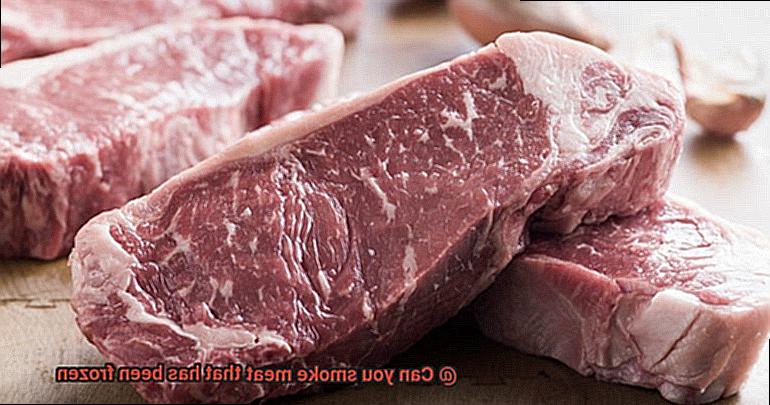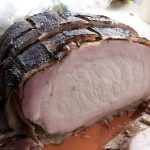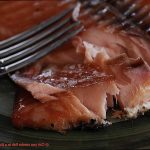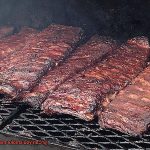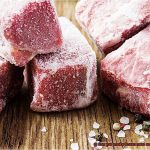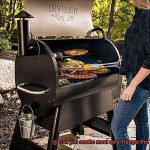Smoking meat is an ancient art that tantalizes taste buds and preserves juiciness. But here’s the burning question: Can you smoke meat that has been frozen? Food enthusiasts everywhere have debated this topic, and today, we’re diving into the world of smoking frozen meat. Get ready to uncover the advantages, disadvantages, and secrets to achieving mouthwatering results.
Advantages:
Smoking frozen meat offers some distinct advantages. Firstly, it allows you to stock up on sale or bulk purchases without sacrificing quality or freshness. Imagine having a freezer full of deliciousness whenever cravings strike. Plus, smoking frozen meat gives you the flexibility to plan your culinary adventures ahead of time or surprise guests with a flavorful feast. And here’s a juicy tidbit – freezing can actually enhance tenderness by breaking down tough fibers and connective tissue.
Disadvantages:
While smoking frozen meat is convenient, it does come with a few considerations. Frozen meat tends to require longer cooking times compared to fresh cuts. This extra time can affect texture and moisture levels, potentially leading to dryness if precautions aren’t taken. Additionally, there’s an increased risk of bacteria growth when dealing with thawed meat. So always follow safe food handling practices from start to finish.
Tips and Tricks:
To ensure smoking success with frozen meat, keep these valuable tips in mind:
- Thaw like a pro: Take your time thawing in the fridge for even defrosting and minimal bacterial risks.
- Flavor infusion: Season or marinate your meat before freezing so those tasty flavors seep in during the thawing process.
- Heat it up: Preheat your smoker slightly higher than usual since frozen meat starts off cold. And remember to use a trusty thermometer for both smoker and internal meat temperatures.
- Patience is key: Be prepared for extended cooking times as frozen meat needs extra hours to reach that perfect internal temperature.
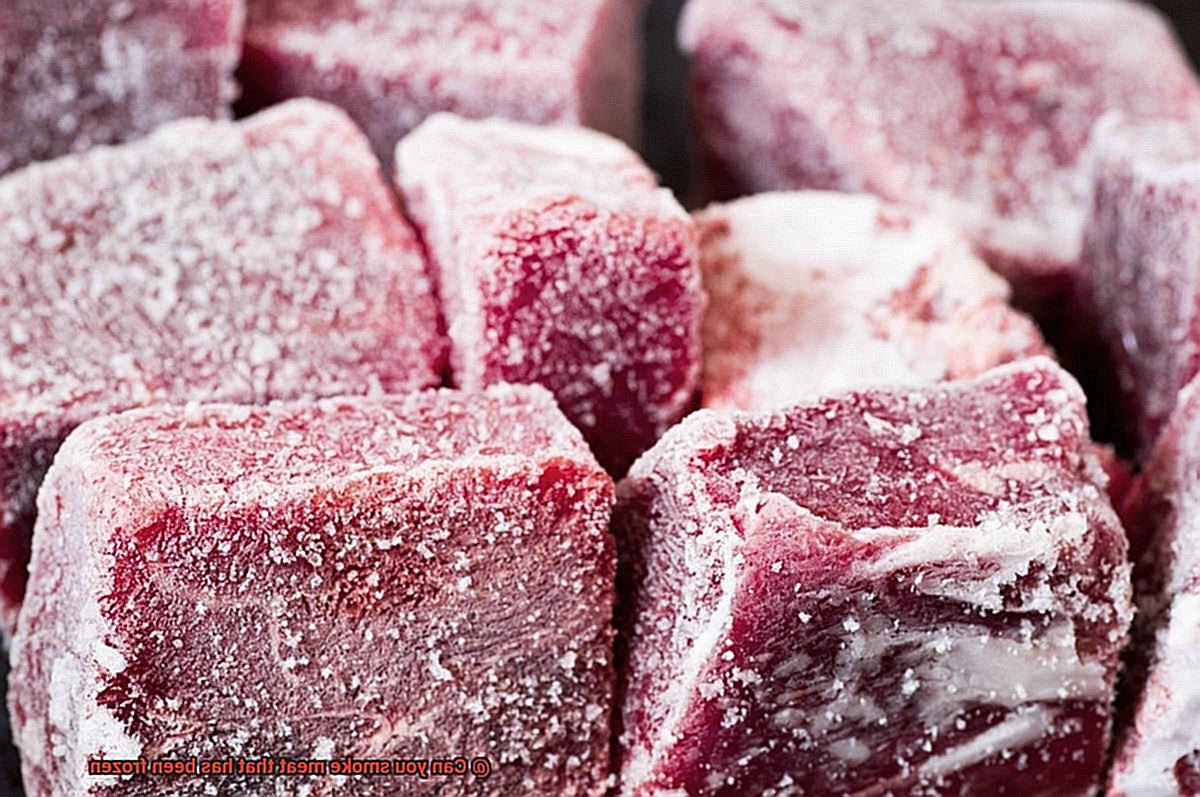
Contents
What to Consider When Freezing Meat for Smoking
Freezing meat before smoking can help preserve its freshness and extend its shelf life. However, there are important considerations to keep in mind to ensure the best results. In this article, we will explore the key factors to consider when freezing meat for smoking.
Start with High-Quality Meat:
To achieve mouthwatering results, begin with fresh, high-quality meat suitable for smoking. Look for cuts with good fat marbling, as fat helps keep the meat moist during smoking. Avoid cuts that are overly lean, as they may dry out during the smoking process. Choosing the right meat is the foundation for a flavorful and tender end product.
Proper Packaging:
To prevent freezer burn and maintain quality, it is essential to use airtight packaging when freezing meat for smoking. Wrap the meat tightly in plastic wrap or place it in freezer bags or vacuum-sealed bags. This will protect the meat from moisture loss and freezer burn. Don’t forget to label each package with the type of meat and date of freezing for easy identification.
Freezing Temperature:
Maintaining the right freezing temperature is crucial. Freeze the meat at 0°F (-18°C) or below to preserve its texture and quality. Check and adjust your freezer’s temperature settings before freezing the meat. Consistently cold temperatures ensure that the meat freezes quickly and efficiently.
Portioning:
Divide the meat into individual servings or appropriate sizes for your smoking needs. This allows for easier thawing and minimizes wastage. Consider your freezer’s capacity to ensure ample space for the frozen meat. Smaller portions also thaw more evenly, ensuring consistent cooking and flavor throughout.
Labeling and Organization:
Labeling each package with relevant information helps track how long the meat has been frozen and ensures you use it within a reasonable timeframe. Organize your freezer by grouping similar meats together for easy access. This will save you time and effort when you’re ready to smoke the meat. Keep an inventory of what you have in the freezer, so you know what needs to be used first.
Thawing the Meat for Smoking
Well, before you ignite that smoker and embark on your smoky adventure, there’s a crucial step you must undertake – thawing your frozen meat. In this article, we’ll delve into the reasons why thawing meat is vital for both safety and flavor, and provide you with expert tips to ensure your smoking experience is an unparalleled success.
Thawing Methods:
Let’s start with the basics. While there are several methods to thaw frozen meat, when it comes to smoking, the refrigerator method reigns supreme. This slow and controlled thawing process facilitates even heat distribution and helps preserve the meat’s quality. So, exercise patience and allow your meat to thaw in the fridge for several hours or even overnight.
Time Considerations:
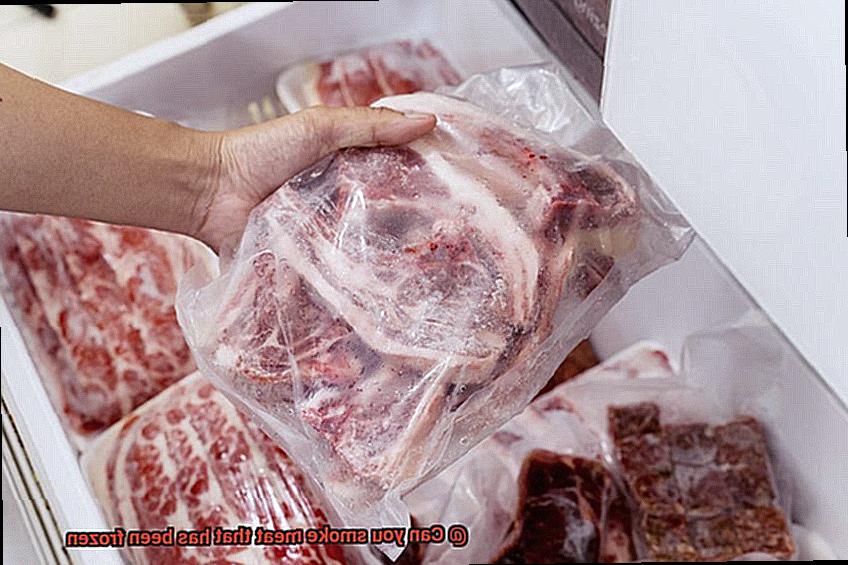
We understand that waiting for your meat to thaw can feel like an eternity when you’re craving that tantalizing smoky goodness. However, rushing the thawing process by using alternative methods like room temperature or hot water can jeopardize food safety by promoting bacterial growth. So, plan ahead and give your meat the time it needs to thaw properly.
Vacuum-Sealed Meat:
If you’re dealing with vacuum-sealed frozen meat, fear not. There’s a quicker alternative – cold water thawing. Simply ensure that the meat is tightly sealed in a leak-proof bag and submerge it in cold water. Remember to change the water every 30 minutes to maintain a consistent temperature. This method can expedite the thawing process but requires vigilant monitoring.
Avoiding the Temperature Danger Zone:
Safety always comes first. When thawing meat, it’s absolutely crucial to keep it out of the temperature danger zone (40°F – 140°F or 4°C – 60°C). This range serves as a breeding ground for bacteria and can lead to foodborne illnesses if consumed. Thawing your meat in the refrigerator guarantees that it remains below this danger zone, safeguarding the well-being of you and your loved ones.
Preparing for Smoking:
Once your meat is completely thawed, it’s time to prepare it for the extraordinary smoking adventure that awaits. Trim any excess fat, marinate or season it to perfection, and let it rest at room temperature for a while. Thawed meat has a remarkable ability to absorb flavors, allowing the smoke and seasonings to penetrate deeply, resulting in an utterly mouthwatering end product.
Patting the Frozen Meat Dry Before Smoking
Before you fire up the grill and dive into the world of smoking meat, there’s one crucial step you must not overlook – patting your frozen meat dry. This seemingly simple act can make all the difference in achieving that mouthwatering flavor and texture you crave.
When meat is frozen, it naturally retains moisture. While this is great for keeping it fresh, it can pose a challenge when it comes to smoking. The excess moisture on the surface of the meat acts as a barrier, inhibiting smoke absorption and ultimately leading to a less flavorful end product. That’s why patting the meat dry is paramount.
By gently blotting the surface of the meat with paper towels or a clean kitchen towel, you effectively remove that excess moisture and create a clean canvas for the smoke to work its magic. This allows for better smoke penetration, infusing your meat with tantalizing flavors and aromas. But that’s not all – patting the meat dry also helps form a thin layer of proteins on the surface, known as a pellicle. This pellicle acts as a sticky layer that helps the smoke adhere to the meat, further enhancing its flavor profile.
To properly pat your frozen meat dry, start by allowing it to thaw slightly. This not only makes it easier to handle but also ensures that you don’t damage the delicate texture of the meat. Once it has thawed, take your trusty paper towels or clean kitchen towel and gently blot away any lingering moisture. Remember to be gentle – too much pressure or vigorous rubbing can harm the integrity of the meat.
Lower Temperature Settings for Even Cooking
How do you ensure that it cooks evenly, resulting in juicy, tender perfection? The answer lies in the art of adjusting your temperature settings when grilling. Welcome to the tantalizing world of lower temperature cooking, where smoky flavors and succulent meats collide.
When it comes to smoking frozen meat, patience is the name of the game. Gradual thawing and a slower cooking pace are essential for achieving even cooking and retaining the moisture and tenderness of the meat. So, what is the ideal temperature range? Experts recommend setting your grill between 225°F and 275°F (107°C and 135°C), creating the perfect environment for a slow and controlled cooking process.
Here’s the catch: smoking frozen meat takes longer than its fresh or thawed counterparts. The internal temperature of frozen cuts rises at a snail’s pace, urging you to embrace your patient side. To determine when your meat reaches smoky perfection, invest in a reliable meat thermometer. Aim for a minimum internal temperature of 145°F (63°C) for most beef, pork, lamb, and veal cuts. Poultry, like chicken or turkey, demands a higher internal temperature of at least 165°F (74°C) to ensure food safety.
But achieving even cooking isn’t just about temperature; it’s also about moisture. Enter the water pan or drip pan filled with water in your smoker. This ingenious addition creates a moist cooking environment, preventing your frozen cuts from succumbing to the dreaded dryness that often accompanies extended cooking times.
Before you embark on your smoking journey, remember to give your frozen meat ample time to thaw. Overnight thawing in the refrigerator is recommended for an even thaw and minimal risk of bacterial growth. Once thawed, take a moment to season or marinate your chilled meat. This step allows the flavors to seep into every fiber of the meat during the smoking process, creating a taste sensation that will leave your friends and family begging for seconds.
And let’s not forget about food safety. Wash your hands thoroughly, avoid cross-contamination, and ensure that your smoker reaches and maintains a safe cooking temperature throughout the smoking process. Safety should always be the first course in your grilling feast.
Choosing the Right Wood for Smoking
The secret to achieving smoky perfection lies in selecting the perfect wood for smoking. In this article, we will explore the importance of wood selection and how it can transform your grilled meats into culinary masterpieces.
Delving into Flavor Profiles:
The type of wood you choose can make or break your smoking experience. Different woods produce distinct flavors, allowing you to tailor your cooking to suit your taste preferences. Let’s take a closer look at some popular woods and their flavor profiles:
- Hickory: This wood is known for its robust, smoky flavor that pairs exceptionally well with pork and beef. It will infuse your meats with an irresistible depth of flavor.
- Mesquite: With its intense and earthy flavor, mesquite should be used sparingly to avoid overpowering your meat. It complements beef and game dishes splendidly, adding a bold and distinctive touch.
- Fruitwoods (Apple and Cherry): If you’re after a sweeter, milder flavor, fruitwoods like apple and cherry are perfect choices. They add a subtle hint of sweetness that beautifully enhances poultry and pork.
- Oak: Versatile oak produces a medium smoky flavor that suits almost any meat, allowing the natural flavors to shine through while adding a touch of richness.
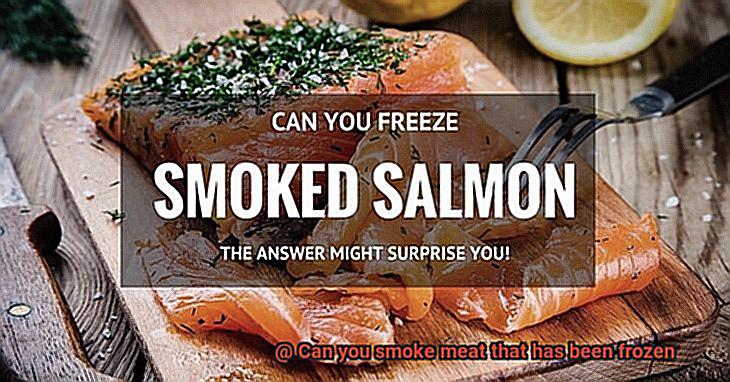
Consider Density and Moisture Content:
Density plays a crucial role in how long the wood burns and the intensity of smoke it produces. Dense woods like hickory and oak burn slowly, imparting a longer-lasting smoke that deeply penetrates the meat. On the other hand, lighter woods like apple and cherry burn faster, providing a more delicate smoky essence.
Seasoned Wood for Optimal Results:
To achieve consistent and pleasant flavors in your smoked meats, using seasoned or dried wood is essential. Green or freshly cut wood tends to have high moisture content, resulting in a bitter taste. Make sure to give your wood enough time to dry out before using it for smoking. This will ensure that the smoke is clean and flavorful, enhancing the taste of your meat.
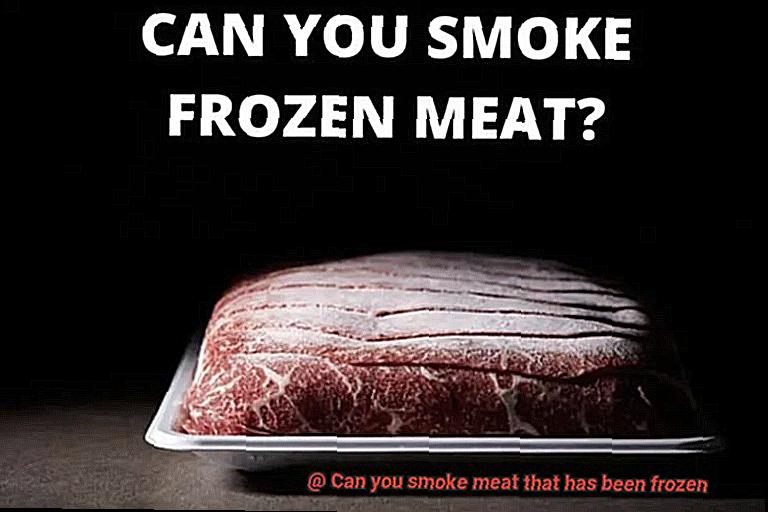
Experimentation and Personal Preferences:
Finding the perfect wood for smoking often involves a bit of trial and error. Personal preferences and the type of meat being smoked can greatly influence your choice. Start by using smaller amounts of wood and gradually adjust to achieve your desired flavor profile. Keep experimenting until you find that perfect balance that tantalizes your taste buds.
Monitoring Internal Temperature During Smoker Process
Smoking meat is an art that demands precision and meticulousness. To achieve smoky perfection, one must master the art of monitoring internal temperature during the smoker process. In this comprehensive guide, we will delve into the significance of this step, exploring how it ensures safety, enhances flavor, and elevates your culinary creations to new heights.
Safety First: Killing Bacteria and Pathogens
Ensuring the internal temperature of smoked meat reaches at least 145°F (63°C) is paramount for safe consumption. This critical temperature effectively kills harmful bacteria and pathogens, safeguarding you and your guests from potential foodborne illnesses.
The Right Tools for the Job: Types of Thermometers
Selecting the appropriate thermometer is key to accurate monitoring. Let’s explore the various options:
- Instant-read thermometers: These offer quick and precise temperature readings but necessitate frequent monitoring.
- Probe thermometers: Inserting a probe into the meat allows continuous monitoring throughout the cooking process, minimizing the need to open the smoker frequently.
- Wireless thermometers: Equipped with transmitters and receivers, these thermometers grant remote monitoring capabilities, enabling you to multitask while keeping an eye on the temperature.
Placing the Probe: Accuracy Matters
To ensure accurate readings, proper probe placement is crucial. Insert the thermometer probe in the thickest part of the meat, away from bones or fatty areas that could skew the reading. This ensures precise temperature measurement for optimal cooking results.
Consistency is Key: Maintaining Temperature
Maintaining a consistent temperature range within your smoker is vital for even cooking and delectable results.
Fluctuations in temperature can lead to unevenly cooked meat and compromise safety. A well-regulated smoker guarantees consistent heat throughout the cooking process, ensuring each bite is a succulent masterpiece.
Different Meats, Different Temperatures
Each type of meat demands specific internal temperatures for both safety and flavor. Consider the following guidelines:
- Poultry: Poultry, such as chicken or turkey, should reach an internal temperature of 165°F (74°C) to ensure thorough cooking.
- Pork: The perfect internal temperature for pork is 145°F (63°C), resulting in juicy and succulent cuts.
By adhering to these guidelines and exploring specific recipes for each type of meat, you can unlock the tantalizing potential of your culinary creations.
Allowing the Meat to Rest After Smoking
Prepare to discover the secret to achieving the ultimate flavor and tenderness: allowing your smoked meat to rest. This step is not to be overlooked, my fellow grill masters and smoking enthusiasts.
Imagine this: after hours of carefully tending to your smoker, monitoring the internal temperature, and patiently waiting for that perfect smoke ring, you finally remove your masterpiece from the heat. The temptation to dig in immediately is strong, but hold on. There’s a crucial step that cannot be skipped – the resting period.
Why is allowing your smoked meat to rest so crucial? Let’s delve into the science behind it:
- Juicy is the name of the game: The heat from cooking causes proteins in the meat to contract, squeezing out precious moisture. Resting allows those juices to redistribute within the meat, resulting in a juicier and more flavorful final product.
- Moisture magic: Resting not only helps retain moisture but also allows the meat to reabsorb some of that delicious liquid it released during cooking. Every bite will be succulent and tender.
- Timing is everything: The ideal resting time varies based on the size and type of meat. Larger cuts like brisket or pork shoulder benefit from resting for at least 30 minutes to an hour, while smaller cuts like ribs or chicken pieces may only need 10-15 minutes. Patience is key here.
- Flavor fusion: While your meat is taking a well-deserved break, the flavors are busy settling and developing further. This is especially true for marinated or seasoned meats. Resting allows those flavors to meld together, creating a symphony of taste.
- Cover up for success: During the resting period, it’s important to keep your meat covered to retain heat. Wrap it loosely in aluminum foil or a clean towel to trap that precious warmth and ensure even distribution of the juices.
- Continuous smoking delight: If you’re serving multiple cuts of meat, utilize the resting time of one cut by starting another on the smoker. This way, you’ll have a continuous flow of mouthwatering smoked meats without sacrificing flavor or tenderness.
Remember, my fellow grillers, patience is a virtue when it comes to smoking meats. Rushing the resting process may lead to less flavorful and less tender results. So take a deep breath, distract yourself with some side dishes or grill-side banter, and let your meat rest its way to greatness.
Once the resting period is over, it’s time to unveil your masterpiece. Unwrap that perfectly rested meat and get ready to carve or serve it as desired. And don’t forget, for maximum tenderness, always slice against the grain.
Benefits of Smoking Frozen Meat
When it comes to grilling, one technique that often goes overlooked is smoking frozen meat. However, this method offers a plethora of benefits that can truly elevate your grilling game. In this article, we will delve into the advantages of smoking frozen meat, including extended shelf life, intensified flavor and tenderness, time-saving convenience, and moisture retention. So, grab your favorite cuts of frozen meat and prepare to embark on a journey of unrivaled smoky deliciousness.
Extended Shelf Life:
Freezing meat is a remarkable preservation method that hinders the growth of bacteria, thereby extending its shelf life. When you opt to smoke frozen meat, the heat generated during the smoking process acts as an additional safety measure by annihilating any remaining bacteria. As a result, you can savor your smoked meat with unwavering confidence, even after prolonged periods of time.
Intensified Flavor and Tenderness:
One of the primary advantages of smoking frozen meat is the incredible depth of flavor it imparts. The slow cooking process allows the captivating smoky flavors to permeate deep into every fiber of the meat, resulting in an exquisitely rich and tantalizing taste.
Furthermore, smoking frozen meat aids in breaking down collagen and connective tissues, transforming them into blissfully tender and juicy morsels that will send your taste buds into a state of euphoria.
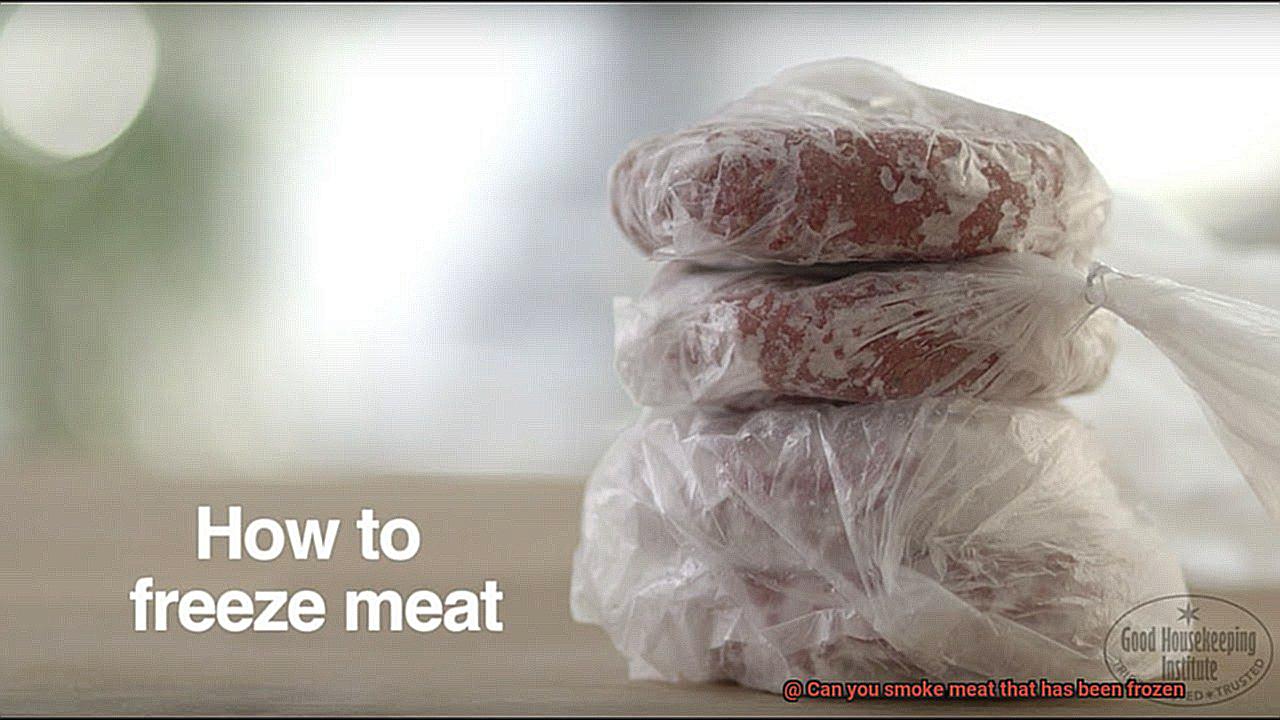
Time-Saving Convenience:
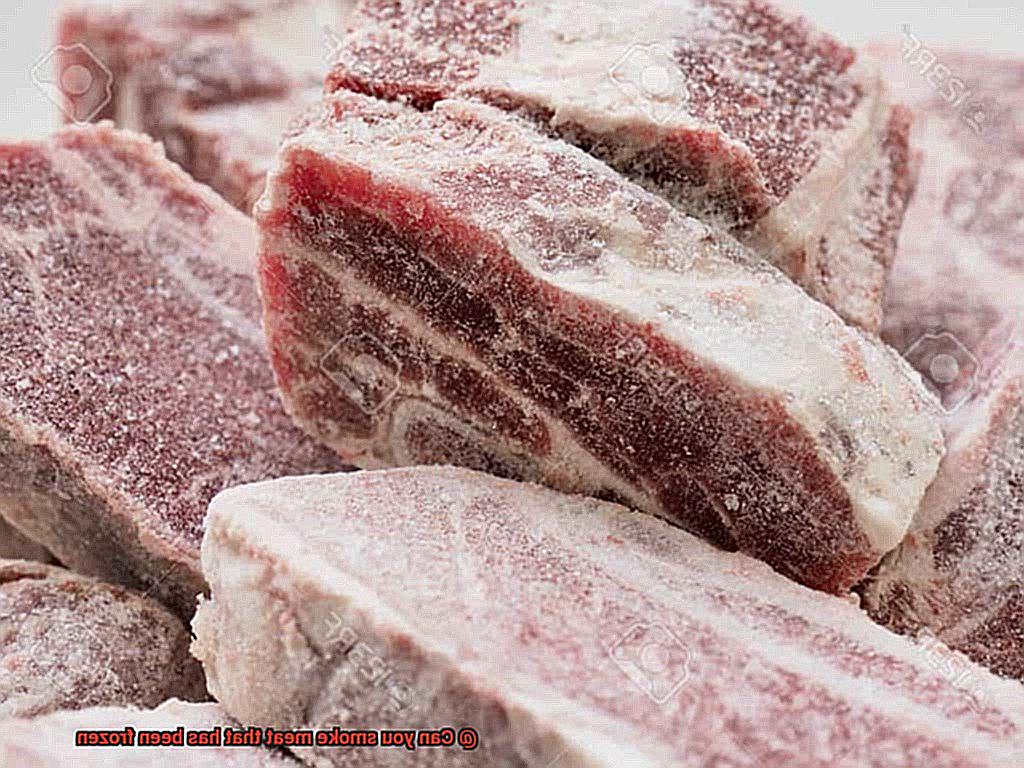
Thawing meat can be an arduous and time-consuming affair, especially when dealing with larger cuts. Fortunately, smoking frozen meat eliminates the need for thawing altogether. Simply retrieve your frozen meat straight from the freezer and transfer it to the smoker—a seamless process that saves you valuable time and effort.
This incredible convenience proves invaluable when unexpected guests grace your doorstep or when you find yourself short on time but still yearning for a mouthwatering homemade feast.
Effortless Meal Planning:
Smoking frozen meat also presents unparalleled convenience when it comes to meal planning. By preparing larger quantities of smoked meat in advance and storing them for later use, you effortlessly streamline your culinary endeavors.
Whether it’s for swift weeknight dinners or impromptu gatherings, having pre-smoked meat readily available ensures that you can easily thaw and reheat whenever the need arises. Not only does this save precious time, but it also guarantees that you always have a delectable and gratifying meal at your fingertips.
Unrivaled Moisture Retention:
The key to succulent and flavorsome meat lies in locking in its moisture. Freezing meat is renowned for its moisture-preserving properties, and when you smoke frozen meat, this exceptional quality remains intact throughout the slow cooking process. The outcome is an impeccably juicy and tender final product that will leave even the most discerning meat enthusiasts utterly astounded.
ZT3m4xV34V0″ >
Conclusion
Absolutely. Smoking frozen meat is not only possible, but it can also yield delicious results. The key is to properly thaw the meat before smoking it, ensuring that it reaches a safe internal temperature.
The low and slow cooking process will infuse the meat with smoky flavors, resulting in a mouthwatering masterpiece.

